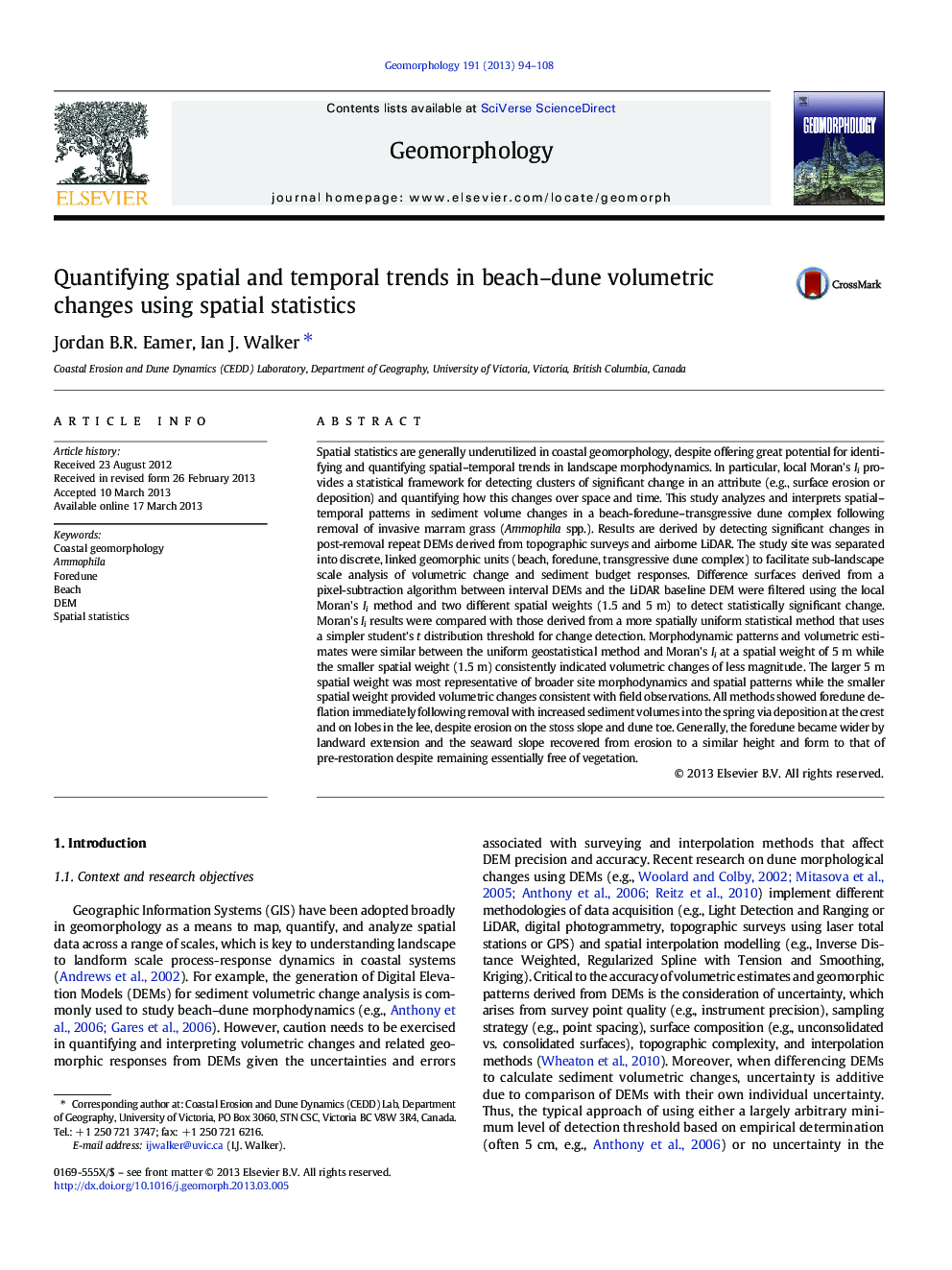| کد مقاله | کد نشریه | سال انتشار | مقاله انگلیسی | نسخه تمام متن |
|---|---|---|---|---|
| 4684814 | 1635458 | 2013 | 15 صفحه PDF | دانلود رایگان |

Spatial statistics are generally underutilized in coastal geomorphology, despite offering great potential for identifying and quantifying spatial–temporal trends in landscape morphodynamics. In particular, local Moran's Ii provides a statistical framework for detecting clusters of significant change in an attribute (e.g., surface erosion or deposition) and quantifying how this changes over space and time. This study analyzes and interprets spatial–temporal patterns in sediment volume changes in a beach-foredune–transgressive dune complex following removal of invasive marram grass (Ammophila spp.). Results are derived by detecting significant changes in post-removal repeat DEMs derived from topographic surveys and airborne LiDAR. The study site was separated into discrete, linked geomorphic units (beach, foredune, transgressive dune complex) to facilitate sub-landscape scale analysis of volumetric change and sediment budget responses. Difference surfaces derived from a pixel-subtraction algorithm between interval DEMs and the LiDAR baseline DEM were filtered using the local Moran's Ii method and two different spatial weights (1.5 and 5 m) to detect statistically significant change. Moran's Ii results were compared with those derived from a more spatially uniform statistical method that uses a simpler student's t distribution threshold for change detection. Morphodynamic patterns and volumetric estimates were similar between the uniform geostatistical method and Moran's Ii at a spatial weight of 5 m while the smaller spatial weight (1.5 m) consistently indicated volumetric changes of less magnitude. The larger 5 m spatial weight was most representative of broader site morphodynamics and spatial patterns while the smaller spatial weight provided volumetric changes consistent with field observations. All methods showed foredune deflation immediately following removal with increased sediment volumes into the spring via deposition at the crest and on lobes in the lee, despite erosion on the stoss slope and dune toe. Generally, the foredune became wider by landward extension and the seaward slope recovered from erosion to a similar height and form to that of pre-restoration despite remaining essentially free of vegetation.
Journal: Geomorphology - Volume 191, 1 June 2013, Pages 94–108